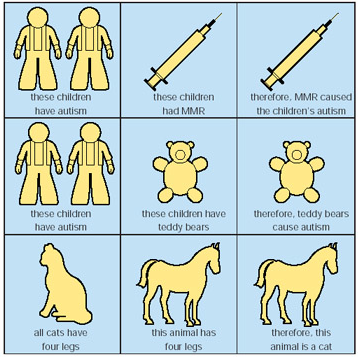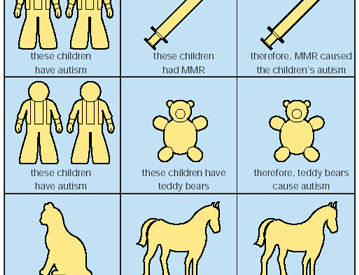Oh, so you think you know meme culture?
Sure, memes are great. But sadly, this article isn?t really about ?salt bae? or ?mocking SpongeBob?. As much as I would love to spend my time writing a clickbait-style article on how much I miss vine, I actually have a job to do.
So, while those memes will always be dear to my heart, we should be investigating the idea of meme theory and using it to find out why our society is teetering between success and disaster.
Richard Dawkins coined the term ?meme? in his 1976 book The Selfish Gene. But it wasn?t the fun term we recognise today, it was scientific:
?Mimeme? comes from a suitable Greek root, but I want a monosyllable that sounds a bit like ?gene?. I hope my classicist friends will forgive me if I abbreviate mimeme to meme. If it is any consolation, it could alternatively be thought of as being related to ?memory?, or to the French word meme. It should be pronounced to rhyme with ?cream?.
Luckily for us, our friend Richard Dawkins wrote for a relatively lay audience, using examples to help us understand this new concept. He mentions tunes, ideas, catchphrases, fashion, and technology (specifically, how to make pots or build arches).
Richard Dawkins described memes that swim around in human culture, in the ?meme pool? (yes, like the ?gene pool?). They get replicated through imitation and adapted alongside the development of culture. With the addition of the internet and the affordances of social media, meme theory can get a little out of hand.
Meme theory suggests that ideas, behaviours, or skills are transferred between people through the process of imitation. Consider the invention of fire and the wheel as fundamental technologies that have been imitated and then adapted to create cars and other newer inventions. This is the kind of process that meme theory explains.
Now, we can investigate how meme theory works to evolve modern culture, within the realm of social media. Specifically, we can investigate how the environment created by social media allows the public to share ideas and create social movements.
We can see positive cultural changes when we consider how meme theory and social media has allowed people to share their ideas for the perceived betterment of society.
Consider the Me Too movement and how it is empowering survivors and initiating discussions about sexual violence. Social media blew up with #MeToo in 2017 when Alyssa Milano tweeted it and when Harvey Weinstein was accused of sexual abuse and harassment. People across social media took this hashtag and added their voices to the movement, this is the process of imitation and replication that the meme theory describes.
So, we can see how the Me Too movement became an important cultural change when it spread through the ?meme pool? which was accelerated by social media.
We can also consider environmental movements such as the plastic bag ban and the more recent move regarding plastic straws. While there hasn?t been a globally trending hashtag like #MeToo, there has been a shift toward phasing out lightweight plastic bags or single use shopping bags as well as the reduction of plastic straws. These environmentally conscious ideas and values have been replicated within our cultural values, through this process of imitation.
When someone adopts these environmentally conscious values and replicates them in their own way, this is proving the process of meme theory.
As we can see, imitation (as described by meme theory) is now more effective thanks to the introduction of social media platforms. It is easy to argue that sharing ideas like these examples can have a positive impact on our society or our environment.
However, the opposite is also true. Damaging ideas can spread like a plague, which can cause negative cultural changes. We could consider flat earth theory, the fallacious ideas of anti-vaxxers, or even terrorism
The recent example of the mosque shootings in Christchurch New Zealand should get the argument across concisely. Terrorists like the Christchurch shooter can communicate globally (through their manifesto) over the internet and spread their beliefs and ideologies. The imitation of these extremist ideas and behaviours has now cost the lives of fifty people in Christchurch.
So, we can see that meme theory can also explain movements like terrorism when people adopt and replicate these types of ideas, which is again accelerated because of the usage of social media.
 Fallacious anti-vax ideas. Original Artist Unknown
Fallacious anti-vax ideas. Original Artist Unknown
Another example would be the plague that is anti-vax ideas. There is a trend on social media platforms from anti-vaxxers to spread opinions about vaccines that are usually proved to be scientifically false (here?s my favourite vaccine comic by Maki Naro). These opinions that they are spreading has proven to cause harm to society because of the weakening herd immunity. The perceived negative cultural changes around vaccines are caused by the imitation of these ideas and behaviours.
Now we can see that meme theory and social media can explain the persistence of ideas and behaviours like terrorism and anti-vax mindsets. Meme theory basically describes these ideas being accepted and then acted upon like in these examples.
For better or worse meme theory does explain the replication of ideas, behaviours, and technologies in our culture. Creative content like the memes we love today are an artistic representation of people replicating and imitating concepts. So, when you use random capitalisation and the ?mocking SpongeBob? image you?re replicating an idea and proving that meme theory holds.
We can continue to see how social media and meme theory will further direct our culture and society either through positive or negative changes; it could have the benefit of a more accepting and knowledgeable society, or it could lead to disaster.



